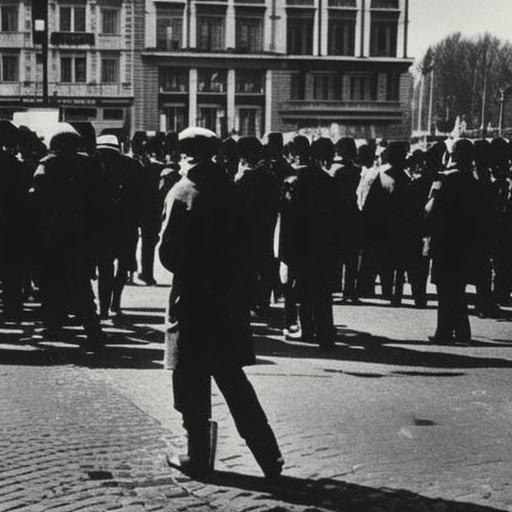Summary:
The Belgian Revolution was a significant event that took place in 1830, resulting in the secession of Belgium from the United Kingdom of the Netherlands. The revolution was driven by a combination of political, social, and economic factors, as well as a desire for national identity and independence. The Belgian Revolution led to the establishment of an independent and constitutional monarchy in Belgium, which has endured to this day.
Causes of the Belgian Revolution:
- Socio-economic Factors: Belgium was characterized by stark socio-economic disparities, with the majority of the population consisting of peasants and industrial workers who faced harsh working conditions and low wages. This led to growing discontent and a desire for change.
- Religious Tensions: Belgium was predominantly Catholic, while the ruling Dutch monarchy favored Protestantism. This religious divide further fueled grievances and a sense of alienation among the Belgian population.
- Political Oppression: The Dutch monarchy imposed a centralized government system, which limited the autonomy and representation of the Belgian provinces. This lack of political freedom and representation contributed to the growing discontent.
- Inspiration from Other Revolutions: The success of other revolutions, such as the French Revolution and the Greek War of Independence, inspired Belgians to seek their own independence and establish a democratic system.
Key Events of the Belgian Revolution:
- August 25, 1830: The revolution began with a performance of an opera in Brussels, during which the audience expressed their discontent and started rioting. This event, known as the “Night of the Opera,” marked the beginning of the revolution.
- September 23, 1830: The Belgian National Congress was convened in Brussels, with representatives from various provinces. The congress aimed to establish a constitution and negotiate the terms of independence.
- October 4, 1830: The congress declared Belgium’s independence from the United Kingdom of the Netherlands and adopted a provisional constitution. The Dutch monarchy rejected the declaration, leading to armed conflict between Belgian and Dutch forces.
- November 4, 1830: The Battle of Hasselt took place, resulting in a Belgian victory and further weakening Dutch control over Belgium.
- July 21, 1831: Leopold of Saxe-Coburg-Gotha was inaugurated as the first King of the Belgians, marking the establishment of a constitutional monarchy in Belgium.
Consequences of the Belgian Revolution:
- International Recognition: Following the revolution, several European powers recognized Belgium as an independent state, including France, Britain, and Russia. This recognition solidified Belgium’s status as a sovereign nation.
- Territorial Adjustments: The revolution led to territorial adjustments, with the Netherlands ceding control over Belgium. The Treaty of London in 1839 confirmed Belgium’s borders and recognized its neutrality.
- Constitutional Monarchy: The Belgian Revolution established a constitutional monarchy, with a parliamentary system and a monarch as the head of state. This system has remained in place, with Belgium becoming a democratic nation.
- Socio-economic Reforms: The revolution paved the way for socio-economic reforms, including the improvement of working conditions, the expansion of education, and the development of infrastructure. These reforms aimed to address the grievances that had fueled the revolution.
- National Identity: The Belgian Revolution played a crucial role in shaping Belgian national identity. It fostered a sense of unity among the Belgian population and laid the foundation for a distinct Belgian culture and identity.
In conclusion, the Belgian Revolution of 1830 was a significant event that led to the secession of Belgium from the United Kingdom of the Netherlands. Driven by socio-economic disparities, religious tensions, and political oppression, the revolution resulted in the establishment of an independent and constitutional monarchy in Belgium. The revolution’s consequences included international recognition, territorial adjustments, the establishment of a constitutional monarchy, socio-economic reforms, and the shaping of Belgian national identity. The Belgian Revolution remains a pivotal moment in Belgian history, symbolizing the country’s fight for independence and the pursuit of democratic ideals.












